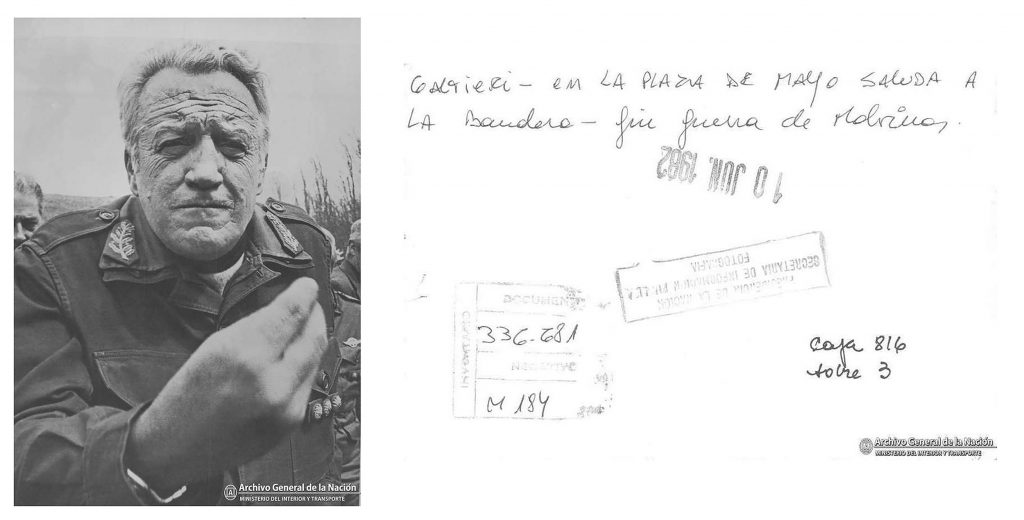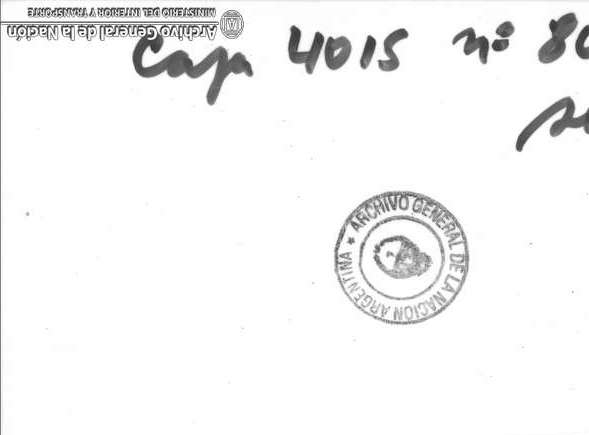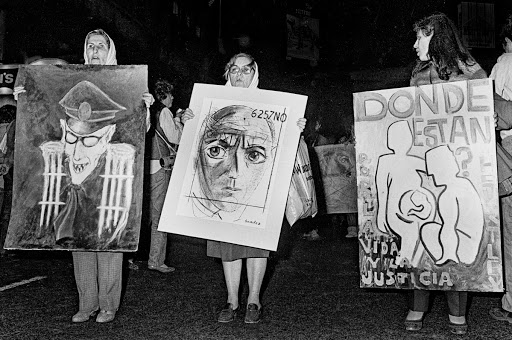Cultural producers of Rochester! I have just arrived in your beautiful city where I am very excited to officially begin my photography artist in residency program with the Flower City Arts Center. Before I delve into what will be the second phase of my current project, “Copyrighting the Light of Day” here is a little re-cap of what I was working on in Buenos Aires, Argentina from where I just arrived. (And if you need any background on my project, please see my last post to get all the details).

(Argentine army leader ‘saluting’ the Malvinas’ flag 13 days before the war ended. Many believe the war meant to be a diversion from the forced disappearances)
My first stop was the Archivo General de la Nación, the oldest national archive of Argentina. The archives were established in August 28, 1821 by Governor Martín Rodríguez as the Buenos Aires Province Archive and are located in the heart of the city. The archive is very unique because it is physical (similar to a periodical system in a old library) If someone would like a copy of a image, the physical version is then digitized and paid for. No cameras, phones or computers are allowed within the archive.
Although I had contacted the Archivo General before arriving and had been assured that I could find photographs between 1976 – 1983 (the period of time in which over 200,000 Argentinian disappeared due to milita control). I was shocked upon arrival to discover that the archives conveniently stopped in 1976. (Although there was an entire section dedicated to the recent president Kristina Cirshner). Dismayed I rooted through the archives hoping I could uncover some of the images I was looking for. I was very lucky that Laura Tusi, a Argentinian Art + Law specialist was also conducting research that same day. After explaining to her my interest in the missing photographs and the proposed bill that would alter the state of the current archives we were standing in she helped me (a) find the few photographs from this era that did exist in the archives, (b) explained to me the importance of Fotos Huérfanas in Argentine history, and (c) put me in contact with other experts and archivists of Fotos Huérfanas from 1976 – 1983 so that I could continue gathering photographs for my project.
While the archive did technically end in 1976 (the exact time before the dictatorship and disappearances began) I was able to find some photographs from this time period in seemingly unrelated fields (such as football, decoration, the Fine Arts or Isabel Peron). According to stamps on the backs of the photographs the viewer can tell if the photographer who took the photograph was known or unknown. The majority of the 200 photographs I found from the dictatorship were unknown.

(The image on the left is a detail from the back of one of the photographs from the archive. The circular stamp that has the Argentinian crest proves this image has a known author. The image above does not have stamp, which means the author might have been disappeared).
Orphaned photographs are images whose rights holders are indeterminate or uncontactable (such as some who has disappeared). According to Neil Netanel <https://en.wikipedia.org/wiki/Orphan_works> the overall increase in orphaned photographs is due to: (1) the lengthening of copyright terms (such as Bill No. 2517-D-2015) and (2) that copyright is automatically conferred without registration or renewal. Orphaned photographs are the least likely to be available to the public in archives.
The next person I had the pleasure of interviewing was Mónica Hasenberg. Mónica was one of the most important photographers during the Dirty War. To this day her work composes some of most iconic images of the dictatorship. Her and her late husband, who was also a documentary photographer, have one of the largest archives of 1980’s Buenos Aires.
Mónica showed me part of her archive “Hasenberg-Quaretti” of 1980’s Argentina which is enormous and includes original negatives. She is currently working with school children across the city about honoring memory and has a exposition of her work up at ESMA. Mónica has part of archive available to the public on facebook and a open source drop-box account. <https://www.facebook.com/ArchivoHasenbergQuaretti> She also showed me some alternative sites that photographers, artists and intellectuals have been using as a collective open source archive. These will be invaluable to me as I begin to put my project together. She also assured me that although not all of her archive is online, she will give me access to her entire archive for the purpose of this project.
 Abuelas de plaza de mayo, mothers who turned into grandmothers protesting the disappearances of their sons and daughters take to the streets armed with Argentinian paintings. (Image: Mónica Hasenberg)
Abuelas de plaza de mayo, mothers who turned into grandmothers protesting the disappearances of their sons and daughters take to the streets armed with Argentinian paintings. (Image: Mónica Hasenberg)
My third stop during my research was at ESMA and el archivo de la memoría, where I met with Julio Menajovsky one of the head researchers. ESMA or “the higher school of mechanics of the Navy” (in Spanish, Escuela Superior de Mecánica de la Armada)was originally an educational facility of the Argentine Navy. It was used as a illegal secret detention center during Argentina’s military dictatorship where thousands were forced to disappear, tortured and executed. The military at the school took the babies born to mothers imprisoned there, suppressed their true identities and allowed them to be illegally adopted by military families. <en.wikipedia.org/wiki/Navy_Petty-Officers_School_of_Mechanics>

ESMA is also home to one of the largest national archives from the dirty war: “el archivo de la memoría.” Its origins is as complicated at Argentinian political history itself. Cristina Kirchner, the recent president of Argentina founded the archives. Kirchner, ideologically is very close to Peronism. Peronism represents the many paradoxes of socialism in Latin America. The last of the Perons in power, Isabel Peron, approved the right-wing death squads that ushered Argentina into the Dirty War. Peron testified as a witness in 1997 and stated that although she signed the degrees she “didn’t remember any of the details.” El archivo de la memoría has all of its images open to the public (for those who can prove a ‘true’ interest) except those that are orphaned. I will be writing a letter to the archives to ask for access to the orphaned photographs.
I realized how recent this catastrophe and dark page of Argentinian history is, when I learned (just last week) that some people who I have grown up with and are very close to my family had very public and politically charged disappearances. My family is terrified I am going to include them in my work (which may be why I just found out). It reminded me how recent these 9 years of terror were. To me, it is a history lesson, to my father and my grandfather it was just daily life.
For the next portion of this project, I will be reaching out to Estimado Eduardo Longoni for a interview, another prominent Argentinian photographer during the dictatorship. And Laura Tusi, to discuss how recent periodico copyright law will affect these orphaned photographs. I am also in the process of organizing all the images I uncovered in Buenos Aires. For this project I will need a photographs for every single day from the dirty war (1974-1983) a total of 3,285 images.
I also installed the sound sculpture “The Ring of Freedom” at El Teatro Municipal, San Isidro commissioned by Art in Odd Places Orlando while I was in Buenos Aires! Here is a video of the sound sculpture installed:
